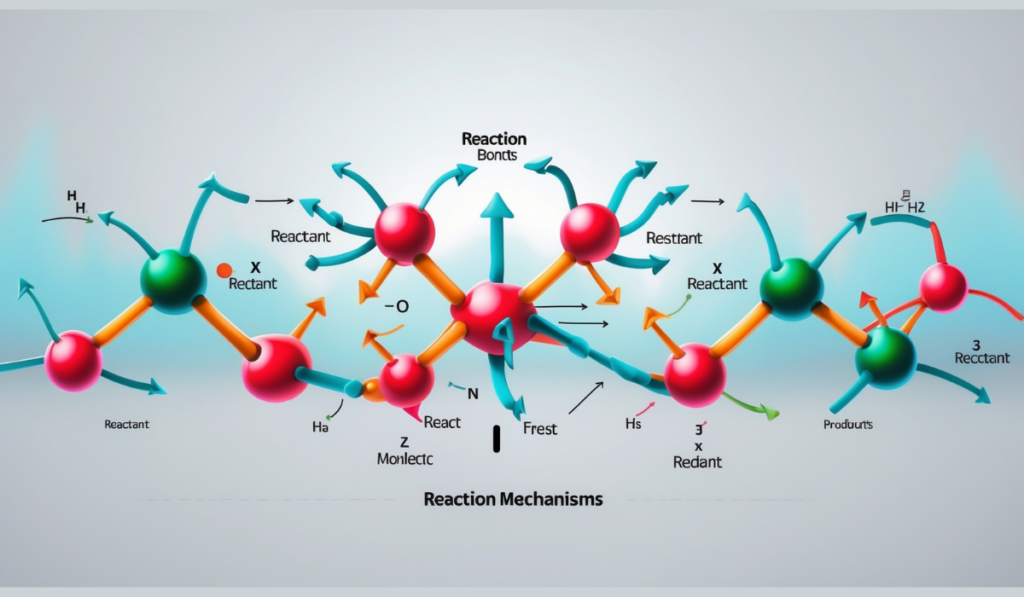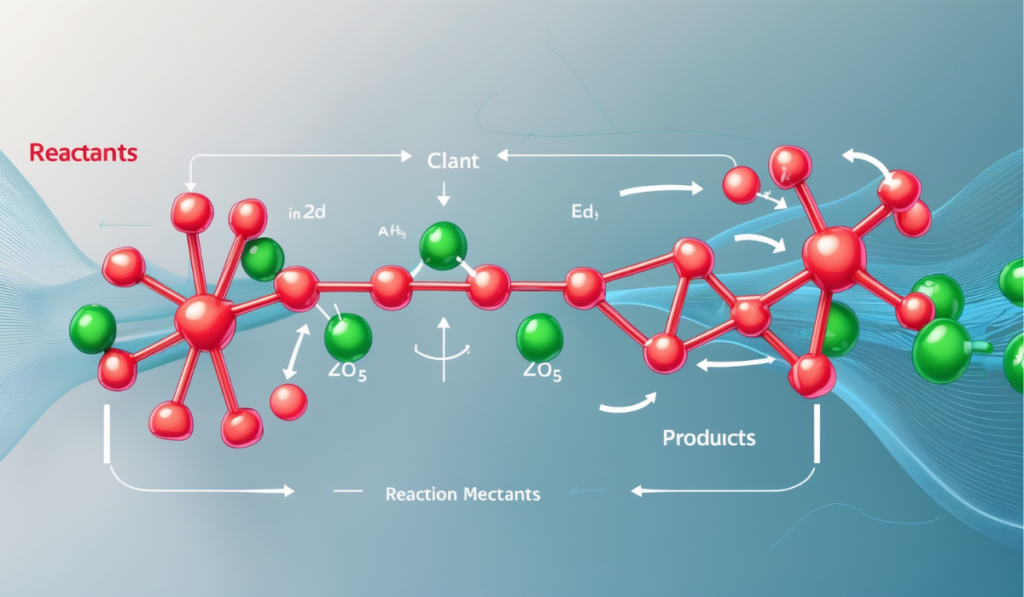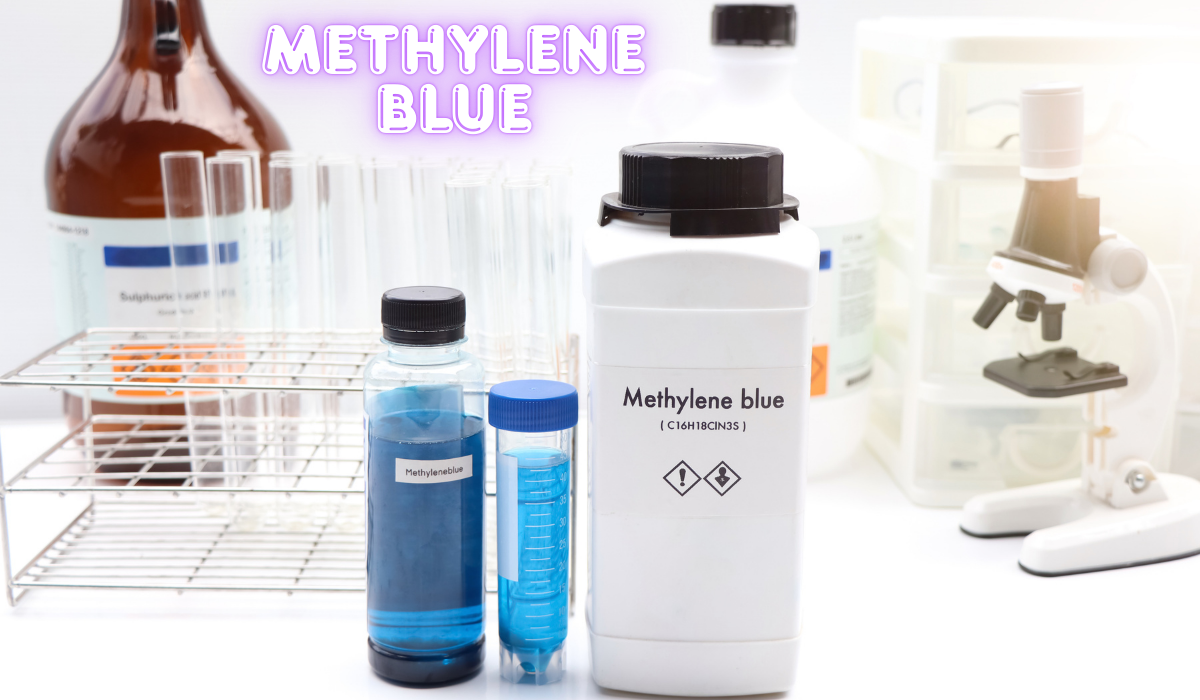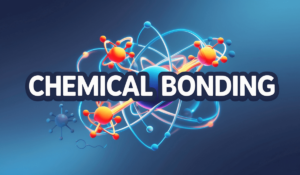Unlocking the Secrets of Organic Chemistry: A Comprehensive Guide to Reaction Mechanisms
Organic chemistry often feels like a labyrinth of reactions, mechanisms, and molecular structures that can intimidate even the most diligent students. Yet, at its core, this fascinating discipline unveils the intricate dance of atoms and bonds that shape the world around us. In “Unlocking the Secrets of Organic Chemistry: A Comprehensive Guide to Reaction Mechanisms,” we will demystify the complex web of reactions, providing you with the clarity needed to understand how chemical processes unfold. From nucleophilic substitutions to elimination reactions, we’ll break down each mechanism step-by-step, illuminating the principles that govern molecular transformations. Armed with this knowledge, you’ll gain not only the confidence to tackle challenging coursework but also a deeper appreciation for the chemistry that fuels life itself. Whether you’re a student, educator, or simply a curious mind, this guide is your key to mastering the art of organic reactions. Let’s embark on this enlightening journey together!
Importance of Reaction Mechanisms in Organic Chemistry
Understanding reaction mechanisms is pivotal in the study of organic chemistry because it provides a detailed, step-by-step description of how chemical reactions occur. This knowledge allows chemists to predict the outcomes of reactions, design new synthetic pathways, and understand the behavior of molecules under different conditions. Without a grasp of reaction mechanisms, the study of organic chemistry would be akin to trying to navigate a foreign city without a map. Reaction mechanisms offer the roadmap that guides chemists through the complex terrain of molecular interactions and transformations.
Reaction mechanisms are not merely academic exercises; they have real-world applications in various fields such as pharmaceuticals, materials science, and environmental chemistry. For instance, the development of new drugs relies heavily on understanding how different molecules interact and transform within the body. By comprehending the mechanisms behind these reactions, chemists can design more effective and targeted medications. Similarly, in materials science, predicting the behavior of polymers and other compounds under different conditions is essential for developing new materials with desired properties.
Moreover, reaction mechanisms help demystify the seemingly chaotic world of chemical reactions. They provide a logical framework that explains why certain reactants lead to specific products and why particular conditions favor certain reactions over others. This understanding is crucial for anyone involved in the chemical sciences, from students and researchers to industrial chemists and educators. By mastering reaction mechanisms, one gains a deeper appreciation for the elegance and order underlying the complexity of organic chemistry.
Key Concepts in Reaction Mechanisms

To navigate the labyrinth of organic reactions, it’s essential to grasp several key concepts that form the foundation of reaction mechanisms. These include the nature of reactants and products, the role of intermediates, and the importance of transition states. Each of these elements plays a critical role in determining the course and outcome of a reaction.
Reactants are the starting materials in a chemical reaction, while products are the substances formed as a result of the reaction. Understanding the properties of reactants, such as their electronic structure and functional groups, is crucial for predicting how they will behave in a reaction. Similarly, knowing the structure and stability of the products can provide insights into the feasibility and efficiency of a reaction.
Intermediates are transient species that form during the course of a reaction. They are often highly reactive and short-lived, making them challenging to isolate and study. However, intermediates play a crucial role in the reaction mechanism, as they provide a link between the reactants and the products. By understanding the nature of these intermediates, chemists can gain valuable insights into the step-by-step process of a reaction.
Transition states represent the highest energy point along the reaction pathway. They are not true intermediates, as they cannot be isolated, but they are critical for understanding the energy changes that occur during a reaction. The concept of the transition state is fundamental to the theory of chemical kinetics, as it provides a way to visualize the energy barriers that must be overcome for a reaction to proceed. By studying transition states, chemists can develop strategies to lower these energy barriers and enhance the rate of a reaction.
Types of Reaction Mechanisms
Organic chemistry encompasses a wide variety of reaction mechanisms, each with its unique characteristics and applications. Some of the most common types include nucleophilic substitutions, electrophilic additions, eliminations, and radical reactions. Each mechanism involves different types of intermediates and transition states, and understanding these differences is key to mastering organic chemistry.
Nucleophilic substitution reactions involve the replacement of a leaving group by a nucleophile. These reactions are classified into two main types: SN1 and SN2 mechanisms. In the SN1 mechanism, the reaction proceeds through a two-step process, with the formation of a carbocation intermediate. In contrast, the SN2 mechanism involves a single, concerted step, where the nucleophile attacks the electrophile simultaneously as the leaving group departs. The choice between SN1 and SN2 mechanisms depends on various factors, such as the structure of the electrophile and the nature of the leaving group.
Electrophilic addition reactions are common in alkenes and alkynes, where an electrophile adds to a double or triple bond. These reactions typically proceed through a two-step mechanism, involving the formation of a carbocation intermediate. The stability of this intermediate plays a crucial role in determining the outcome of the reaction. Electrophilic addition reactions are widely used in the synthesis of complex organic molecules, as they allow for the introduction of new functional groups and the construction of carbon-carbon bonds.
Elimination reactions involve the removal of atoms or groups from a molecule, resulting in the formation of a double or triple bond. These reactions are classified into two main types: E1 and E2 mechanisms. In the E1 mechanism, the reaction proceeds through a two-step process, with the formation of a carbocation intermediate. In contrast, the E2 mechanism involves a single, concerted step, where the base abstracts a proton simultaneously as the leaving group departs. The choice between E1 and E2 mechanisms depends on various factors, such as the structure of the substrate and the strength of the base.
Step-by-Step Breakdown of Common Reaction Mechanisms

To truly understand reaction mechanisms, it’s essential to break them down into their individual steps and examine each component in detail. Let’s take a closer look at some common reaction mechanisms and how they unfold step-by-step.
In the SN1 nucleophilic substitution mechanism, the reaction begins with the dissociation of the leaving group from the electrophile, forming a carbocation intermediate. This step is typically slow and rate-determining, as it involves the breaking of a covalent bond. Once the carbocation is formed, the nucleophile can attack the positively charged carbon, resulting in the formation of the product. The stability of the carbocation intermediate is a key factor in determining the rate and outcome of the reaction.
In the SN2 nucleophilic substitution mechanism, the reaction proceeds through a single, concerted step. The nucleophile attacks the electrophile from the opposite side of the leaving group, resulting in the simultaneous breaking of the bond with the leaving group and the formation of a new bond with the nucleophile. This mechanism is characterized by a backside attack, leading to an inversion of configuration at the electrophilic carbon. The steric hindrance around the electrophile plays a crucial role in determining the feasibility of an SN2 reaction.
In the electrophilic addition mechanism, the reaction begins with the attack of the electrophile on the electron-rich double or triple bond of the alkene or alkyne. This step results in the formation of a carbocation intermediate, which is typically stabilized by resonance or hyperconjugation. In the second step, a nucleophile attacks the carbocation, resulting in the formation of the product. The regioselectivity of the reaction is often governed by the stability of the carbocation intermediate, with more stable intermediates leading to the major product.
Factors Influencing Reaction Mechanisms
Several factors influence the course and outcome of reaction mechanisms in organic chemistry. These include the nature of the reactants, the solvent, the temperature, and the presence of catalysts. Understanding how these factors affect reaction mechanisms is crucial for predicting and controlling chemical reactions.
The nature of the reactants, such as their electronic structure and steric properties, plays a significant role in determining the feasibility and rate of a reaction. For example, the reactivity of a nucleophile is influenced by its electron density and steric hindrance. Similarly, the stability of a carbocation intermediate is affected by the electronic effects of substituents, such as inductive and resonance effects. By understanding these factors, chemists can design reactions that maximize the reactivity and selectivity of the reactants.
The choice of solvent can also have a profound impact on reaction mechanisms. Polar solvents, such as water and alcohols, can stabilize charged intermediates and transition states, thereby facilitating reactions that involve polar species. Nonpolar solvents, such as hexane and benzene, are better suited for reactions involving nonpolar intermediates. The solvent can also influence the rate of a reaction by affecting the solubility and diffusion of the reactants. By selecting the appropriate solvent, chemists can enhance the efficiency and selectivity of a reaction.
Temperature is another critical factor that influences reaction mechanisms. Increasing the temperature can provide the necessary energy to overcome the activation barrier of a reaction, thereby increasing the rate of the reaction. However, higher temperatures can also lead to the formation of unwanted side products by promoting alternative reaction pathways. By carefully controlling the temperature, chemists can optimize the yield and selectivity of a reaction.
Tools and Techniques for Studying Reaction Mechanisms
Modern chemistry is equipped with a variety of tools and techniques for studying reaction mechanisms. These methods allow chemists to probe the details of chemical reactions at the molecular level, providing insights into the intermediates and transition states involved. Some of the most commonly used techniques include spectroscopy, computational chemistry, and kinetic studies.
Spectroscopy, such as nuclear magnetic resonance (NMR) and infrared (IR) spectroscopy, is a powerful tool for studying reaction mechanisms. NMR spectroscopy provides detailed information about the electronic environment of nuclei in a molecule, allowing chemists to identify intermediates and monitor the progress of a reaction. IR spectroscopy, on the other hand, provides information about the vibrational modes of a molecule, which can be used to identify functional groups and monitor changes in molecular structure during a reaction.
Computational chemistry involves the use of computer simulations to model and predict the behavior of molecules in a reaction. By employing quantum mechanical and molecular mechanical methods, chemists can calculate the energy profiles of reaction pathways, identify transition states, and predict the most favorable reaction mechanisms. Computational chemistry provides a valuable complement to experimental studies, allowing chemists to explore reaction mechanisms that may be difficult or impossible to study experimentally.
Kinetic studies involve measuring the rates of reactions under different conditions to gain insights into the reaction mechanism. By analyzing the rate data, chemists can determine the order of the reaction, identify the rate-determining step, and propose a plausible mechanism. Techniques such as stopped-flow spectroscopy and rapid-mixing methods allow for the study of fast reactions and the detection of short-lived intermediates.
Common Mistakes in Understanding Reaction Mechanisms
Despite the wealth of information available, students and even experienced chemists often make mistakes in understanding reaction mechanisms. Some common pitfalls include overlooking the role of intermediates, confusing the concepts of kinetics and thermodynamics, and failing to consider the influence of solvent and temperature.
One common mistake is overlooking the role of intermediates in a reaction mechanism. Intermediates, although transient and often difficult to detect, play a crucial role in determining the course of a reaction. Failing to recognize the presence of intermediates can lead to an incomplete or incorrect understanding of the reaction mechanism. It’s essential to consider all possible intermediates and their stability when analyzing a reaction mechanism.
Another common mistake is confusing the concepts of kinetics and thermodynamics. Kinetics refers to the rate of a reaction and the factors that influence it, while thermodynamics refers to the overall energy changes and the stability of the reactants and products. A reaction that is thermodynamically favorable may not proceed at a significant rate if it has a high activation energy barrier. Conversely, a reaction that is kinetically favorable may not lead to a stable product. Understanding the distinction between kinetics and thermodynamics is crucial for accurately predicting and controlling chemical reactions.
Failing to consider the influence of solvent and temperature is another common mistake. The choice of solvent and the reaction temperature can have a profound impact on the reaction mechanism, influencing the stability of intermediates, the rate of the reaction, and the selectivity of the products. It’s essential to carefully consider these factors when designing and analyzing a reaction mechanism.
Resources for Further Learning in Organic Chemistry
For those looking to deepen their understanding of organic chemistry and reaction mechanisms, there are numerous resources available. These include textbooks, online courses, research articles, and educational websites. By leveraging these resources, students and chemists can enhance their knowledge and stay up-to-date with the latest developments in the field.
Textbooks are a fundamental resource for learning organic chemistry. Classic texts such as “Organic Chemistry” by Paula Yurkanis Bruice, “Advanced Organic Chemistry” by Jerry March, and “Mechanisms in Organic Chemistry” by Peter Sykes provide comprehensive coverage of reaction mechanisms and the principles underlying them. These books offer detailed explanations, illustrative examples, and practice problems to help students master the material.
Online courses and video lectures are another valuable resource for learning organic chemistry. Platforms such as Coursera, edX, and Khan Academy offer courses taught by experienced instructors from leading universities. These courses often include video lectures, interactive exercises, and quizzes to reinforce learning. Additionally, many universities offer free access to lecture notes and course materials through their websites.
Research articles and review papers provide insights into the latest advancements in organic chemistry. Journals such as the Journal of the American Chemical Society, Organic Letters, and Angewandte Chemie publish cutting-edge research on reaction mechanisms and related topics. Reading these articles can help students and chemists stay informed about new discoveries and emerging trends in the field.
Conclusion: Mastering Reaction Mechanisms for Success in Organic Chemistry
Mastering reaction mechanisms is essential for success in organic chemistry. By understanding the step-by-step process of chemical reactions, chemists can predict reaction outcomes, design new synthetic pathways, and gain insights into the behavior of molecules. This comprehensive guide has provided an overview of the importance of reaction mechanisms, key concepts, types, and factors influencing them, as well as tools and techniques for studying them.
Whether you are a student, educator, or professional chemist, the knowledge of reaction mechanisms will empower you to tackle challenging problems and advance your understanding of organic chemistry. By leveraging the resources available and maintaining a curious and analytical mindset, you can unlock the secrets of organic chemistry and appreciate the intricate dance of atoms and bonds that shape the world around us.
Let this guide serve as your key to mastering the art of organic reactions, and embark on this enlightening journey with confidence and enthusiasm. The world of organic chemistry is vast and fascinating, and with a solid understanding of reaction mechanisms, you will be well-equipped to explore its many wonders.





Post Comment